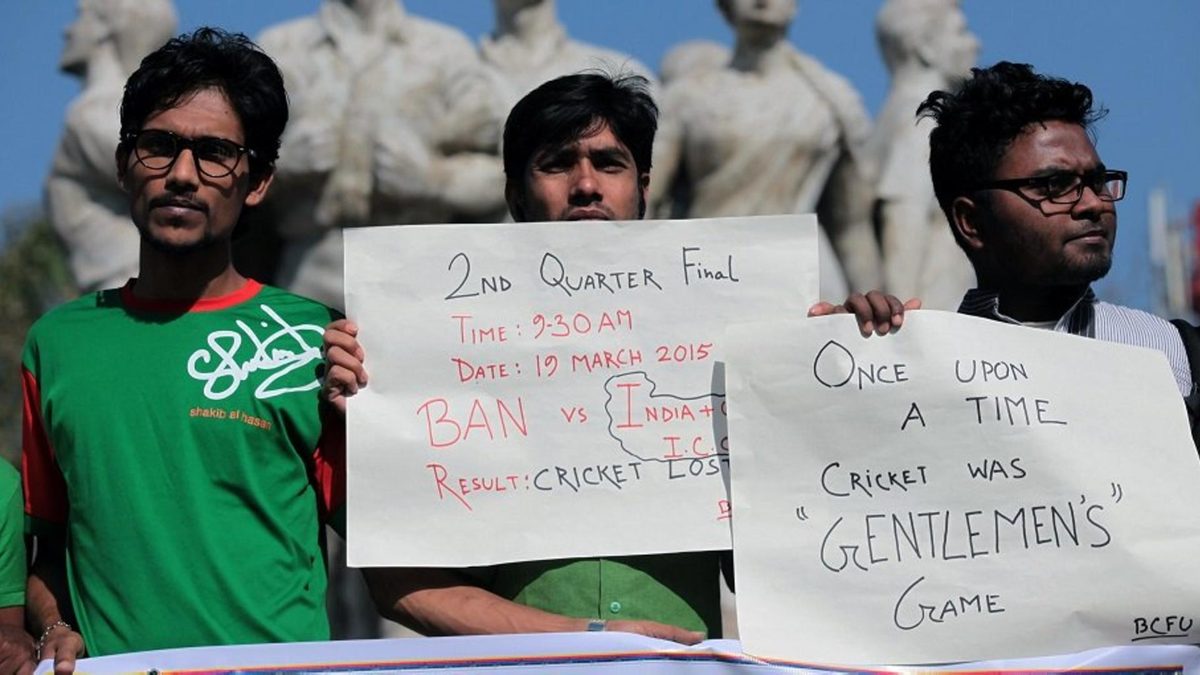
The India–Bangladesh clash at the 2022 T20 World Cup had its share of controversies. It also evoked unpleasant memories of another much-debated World Cup match between the same sides in the same nation.
Melbourne, 2015. Bangladesh were playing their first ever knockout match at the World Cup, the highest point in their cricketing history at that point. They were up against India, who had not only won every match they had played in the league stage of the tournament but had bowled out every opposition.
India were firm favourites, and at 196-3 after 39.3 overs, had been living up to the expectations of their fans with the bat. Then Rubel Hossain bowled a waist-high full-toss, Rohit Sharma pulled, and the fielder at deep square-leg took the catch. The umpires signalled a no-ball. Replays revealed it was a marginal call.
Rohit, on 90 from 101 balls at that point, went on to score 137 off 126 to help India reach 302-6 at the end of their innings. Bangladesh’s spirited response fizzled out as wickets fell, and they were eventually bowled out for 193.
It was not the closest umpiring decision in the history of cricket, or even in World Cups. However, in terms of sheer impact, it has few parallels.
It began with posts on social media, accompanied by still images of the moment of contact, some of them featuring arrows. However, unlike most other cricketing controversies, this did not die out – nor did it remain restricted to fans.
The writing was on the wall for the scale of the controversy the moment Athar Ali Khan, pillar of Bangladeshi batting in the 20th century and the voice of the nation in ICC tournaments, posted on Facebook.
“From what I have seen, the umpiring was very poor,” said ICC president AHM Mustafa Kamal. “I am speaking as a fan, not as the ICC president. Umpires may make mistakes. The ICC will see if this was done deliberately. Everything is on record.”
ICC chief executive David Richardson’s response made the incident even more contested: “The ICC has noted Mr Mustafa Kamal’s comments, which are very unfortunate but made in his personal capacity. As an ICC president, he should have been more considerate in his criticism of ICC match officials, whose integrity cannot be questioned.”
On the same day, the Bangladesh Cricket Board declared that they would lodge an appeal against the decision. “Legally what needs to be done, we will do it,” announced BCB president Nazmul Hassan Papon following a discussion with Kamal, his predecessor at the board.
When India toured Bangladesh later that year, the official Indian broadcasters ran a patronising campaign that portrayed Bangladesh as the once-children, now-grownups of cricket.
It backfired for them after a rain-hit Test match, when Bangladesh won their first ODI series against India, largely due a superb debut outing from a left-arm seamer called Mustafizur Rahman, who took 5-50 and 6-43 in the first two matches of his career.
Bangladesh had their ‘revenge’ – but the matter did not end there. When India returned for next year’s Asia Cup, the two teams clashed in the tournament final. Ahead of the match, a fan-created image of Taskin Ahmed carrying the head of MS Dhoni went viral on social media.
Photoshop pic of Bangladesh pacer Taskin Ahmed carrying Dhoni's severed head goes viral @htTweets @HTSportsNews pic.twitter.com/SU4cnBzMaM
— Jasvinder Sidhu (@life22yards) March 5, 2016
It turned out to be anticlimactic, for two reasons: Dhoni hit a six to finish the final and, shortly after the tournament, Mustafizur became the first overseas cricketer to win the Emerging Player Award at the IPL.
In a way, Mustafizur helped undo the verbal venom – there cannot be another word for it – spewed by the most toxic sections of both fan bases since the Rohit incident. While Shakib Al Hasan had been brilliant for the Kolkata Knight Riders he had been a superstar even without the IPL, lessening his impact on the fan base. India fans took to Mustafizur immediately, and as he grew in stature, his achievements hit the headlines back home. In just over a year after the 2015 controversy, fans from both sides of the border were celebrating each other’s cricket.
A close stumping decision went against Litton Das against India in the 2018 Asia Cup, but the matter subsided soon. At the 2019 World Cup, Rohit got 104 and India 314-9. Mohammad Saifuddin kept Bangladesh in the hunt until they were bowled out for 286. The match was played in great spirit. The 2015 controversy seemed a thing of the past.
Then, in October 2019, India hosted Bangladesh for a FIFA World Cup qualifier at the Salt Lake Stadium in Kolkata. Saad Uddin put Bangladesh one-up in the 42nd minute, but Adil Khan equalised in the nick of time.
In that hard-fought encounter, played out in front of at least 85,000, a Bangladesh fan held aloft a banner whose text – a popular line used by both fanbases in the aftermath of the 2015 incident – translates to “Rohit Sharma was out”.
‘রোহিত শর্মা আউট ছিল’ ৮৫ হাজার দর্শকের সামনে দাবি https://t.co/mBi64TZ4Bd pic.twitter.com/9SyFxadexw
— jugjugantor24 (@jugjugantor24) October 16, 2019
The banner brought back memories, but it was not taken too seriously. A few months later, the India and Bangladesh cricketers got involved in an utterly avoidable scuffle at the 2020 Under-19 World Cup final. The ICC sanctioned two India players and three from Bangladesh.
Then came the global lockdown, followed by a lack of competition between the sides. Time had dissipated the bitterness to some extent.
The Adelaide match reignited everything.
Bet365 will be Live Streaming all of the T20 World Cup matches direct to your iPhone, iPad or Android device, as well as desktop. This means that every T20 World Cup fixture will be available to bet365 customers wherever they are in the world.








